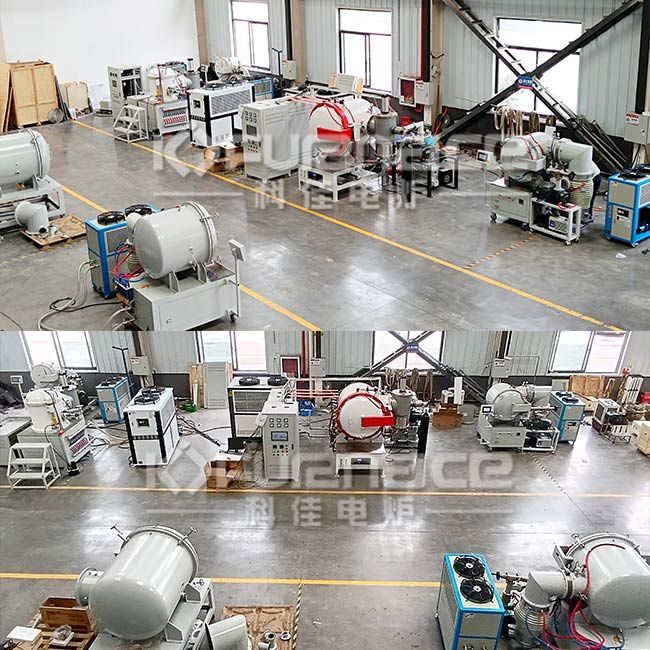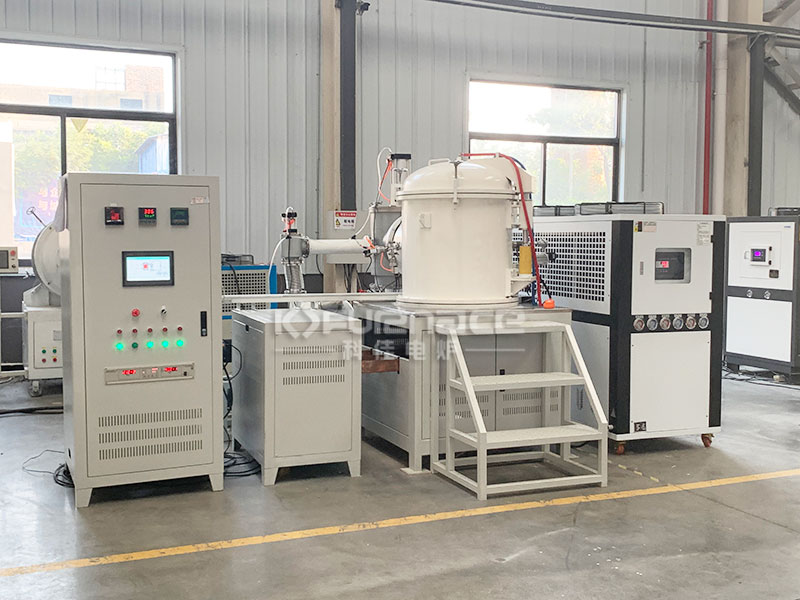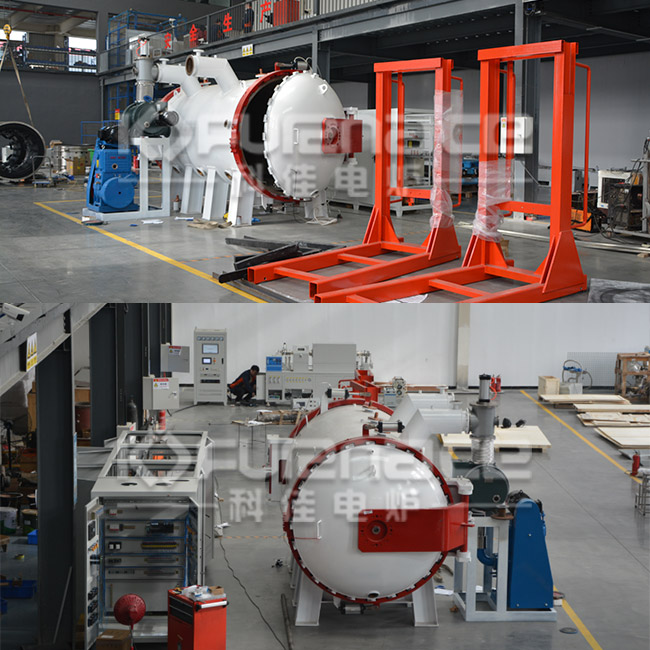High temperature vacuum furnaces need to pay attention to multiple aspects during use to ensure their normal operation, improve their service life, and ensure the safety of operators. So what are the specific precautions for using high-temperature vacuum furnaces? Let’s take a look below!

Commonly used high-temperature vacuum furnaces (click on the image to view product details)
1. Safety inspection and preparation
Environmental inspection:
Ensure that the high-temperature vacuum furnace and its surrounding areas are free of flammable and explosive materials, and maintain a clean environment.
Check if the electrical circuit is intact and if the grounding is reliable to ensure equipment safety.
Equipment inspection:
Check whether the vacuum system components such as vacuum pump and vacuum gauge are working properly, and whether the vacuum pipeline is unobstructed.
Check if the heating element is damaged or aged, and replace it promptly if necessary.
Check if the water cooling system is functioning properly, ensuring that the cooling water circuit is unobstructed and the water temperature is moderate.
Material preparation:
The materials to be processed must be cleaned and dried before being loaded into the furnace to prevent moisture and dirt from entering the furnace.
2. Operating standards
Operator training:
Ensure that the operators are familiar with the equipment operating procedures and safety precautions, and have the corresponding operating qualifications.
Operators should master the basic operation buttons and functions of vacuum furnaces, and understand the working principle of the equipment.
Feeding and monitoring:
After reaching the predetermined vacuum degree and temperature, add the material to be processed according to the operating procedures.
Startup and setup:
Start the vacuum system according to the operating procedures to ensure that the required vacuum level is achieved inside the furnace.
Set appropriate temperature and time according to the requirements of sintering or processing materials, and monitor temperature changes during the sintering or processing process.
During sintering or processing, constant attention should be paid to changes in furnace temperature, vacuum degree, and equipment operation status to ensure safe and stable operation of the process.
3. Exception handling
Abnormal temperature:
If an abnormal increase or decrease in temperature is found, the heating power should be immediately turned off, and the heating elements, temperature sensors, and other components should be checked for damage or poor contact.
Insufficient vacuum degree:
If the vacuum degree cannot reach the predetermined value, check whether the vacuum pump, vacuum pipeline and other components are blocked or damaged, and clean or replace them in a timely manner.
Equipment malfunction:
If the equipment malfunctions, the operation should be stopped immediately and professional personnel should be notified for inspection and maintenance.

Vertical graphite vacuum furnace capable of reaching 2000 ℃ (click on the image to view product details)
4. Maintenance and upkeep
Regular cleaning:
After sintering or processing, after the equipment cools down, clean the residues and impurities inside and around the furnace to keep the equipment clean.
The heat-resistant steel components such as the bottom plate, heating element, and furnace insulation layer should be cleaned after a period of use, and knocking is strictly prohibited. The oxide scale can be carefully removed.
Water quality inspection:
Regularly inspect the cooling water system to ensure good water quality and prevent mineral deposition and blockage.
Equipment inspection and maintenance:
Conduct a comprehensive inspection of the equipment to ensure that all components are intact and undamaged, and replace vulnerable parts.
Regularly maintain and upkeep the equipment, such as cleaning the vacuum pump, replacing heating elements, etc., to extend the service life of the equipment.
Shutdown processing:
When not using the stove in winter, the water in the chiller and pipes should be drained in a timely manner to prevent the internal water pipes from freezing and cracking.
If conditions permit, it is best to connect another multi-purpose water source to the circulating water source, that is, tap water backup. If there is a power outage, the backup water source should be immediately turned on to protect the furnace body.
5. Other precautions
Avoid overloading:
The maximum operating temperature of a high-temperature vacuum furnace refers to the surface temperature of the component allowed in the vacuum, not the temperature of the heating material or the temperature around the heating element. Be careful not to overload the equipment.
Prevent the heating element from reacting with the product:
To avoid reactions between heating elements and products, especially when copper, aluminum, zinc, tin, lead, etc. come into contact with vacuum heating elements, it is necessary to prevent erosion and the formation of “pits” on the surface of the electric heating element, reducing the cross-sectional area and ultimately overheating and burning out.
Safe operation:
In case of sudden power outage, water outage or other unexpected situations during operation, emergency measures should be taken immediately to ensure the safety of equipment and personnel.
So, the use of high-temperature vacuum furnaces involves multiple precautions, and operators should strictly follow relevant regulations to ensure the normal operation and safe operation of the equipment.

Industrial vacuum sintering furnace (click on the image to view product details)
So, the use of high-temperature vacuum furnaces involves multiple precautions, and operators should strictly follow relevant regulations to ensure the normal operation and safe operation of the equipment.Click to learn more Vacuum Furnaces! Or click on online customer service to learn more about product information!